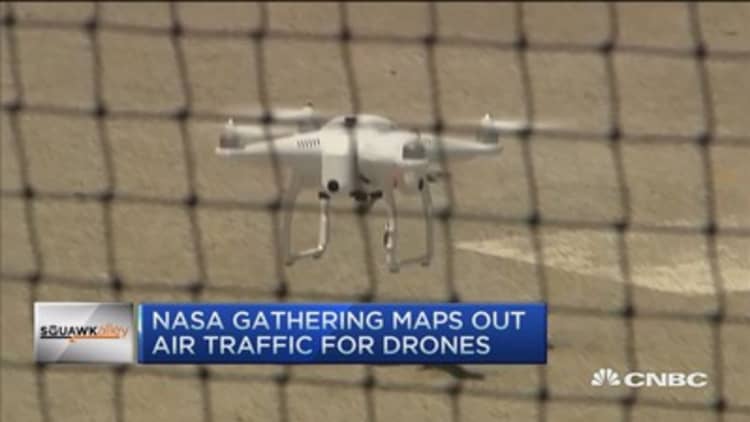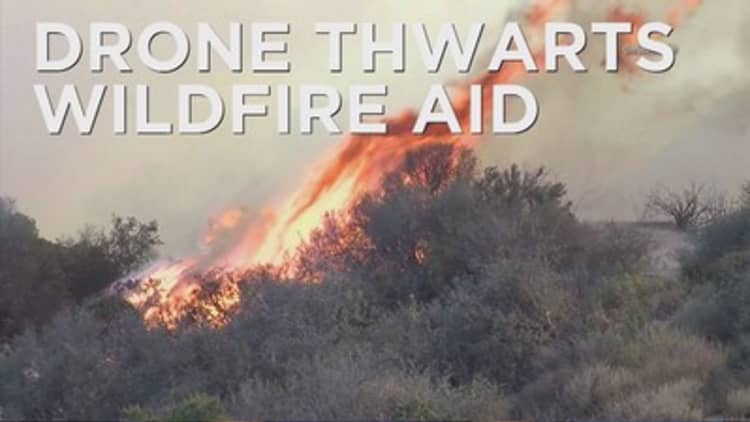Drones are showing up at airports, on federal land and on the Internet, and they are starting to make some lawmakers, and some members of the public very nervous.
Between showing up in places they are not supposed to be, interfering with activities such as firefighting and being turned into casual weapons, the concerns have caused regulators at the Federal Aviation Administration to launch investigations, and led some lawmakers to call for tougher rules.
But observers inside and outside the industry are divided as to which rules can be practically implemented and whether they will prove to be needlessly onerous to legitimate users of the growing technology. Some also say that there is too little clarity over what is permitted now, and what may be allowed in the near future, which is itself deterring some would-be drone users from adopting the technology.
The market for both recreational and commercial use is growing fast and shows no sign of letting up. The Consumer Electronics Association recently reported that drone sales in the United States are expected to total $105 million in 2015, up more than 50 percent from last year. The group expects 700,000 drones to be sold by the end of 2015.
"I think that what is interesting about this technology is that its accessibility is evolving faster than regulation," said Margot Kaminski, an assistant professor of law at Ohio State University. The issue is that they are being widely adopted by unlicensed, untrained people, and regulators in this field, particularly the FAA, are not used to managing that kind of user, she said.
Reports of various dubious drone activity keep trickling in. In the last week, four different commercial airline crews reported spotting drones near New York's John F. Kennedy International Airport.
Worries are not just limited to airlines.
Read More Big names from Silicon Valley team up on drones
Last January, a hobby drone crash-landed on the White House lawn, after a man who lived in the area lost contact with it. Flying drones outdoors is illegal in Washington, D.C., but the man was not charged. Early in July an 18-year-old from Connecticut posted a video on YouTube showing a tricked-out drone mounted with a pistol—that successfully fired.
Drone activity has also hampered firefighting activities in the West, forcing agencies to ground firefighting planes. The machines are potentially a threat to low-flying airplanes, including the planes that drop fire retardant on wildfires, or helicopters that transport medical patients.
After drone sightings forced wildland firefighters to ground planes in California's San Bernardino Mountains, U.S. Rep. Paul Cook, R-Calif., introduced a bill into Congress called the Wildfire Airspace Protection Act of 2015. If implemented, the bill would impose a fine and up to five years in prison for anyone convicted of flying a drone that interferes with firefighting planes on federal land.
U.S. Rep. Adam Schiff, D-Calif, who represents communities near Los Angeles, has also asked the FAA to consider mandating "geofencing" technology in civilian drones—essentially a technology that prevents drones from flying into specific areas
"We are urging the FAA to consider the options available to stop commercial drones from interfering with first responders, including technological measures like geofencing which prevent drones from flying in a restricted airspace. ... We are not prescribing any particular technological solution, but given the clear danger posed by the reckless use of civilian drones near wildfires as well as airports, it's appropriate for the FAA to consider all measures within their authority," said a statement sent to CNBC by Schiff's office.
Could new rules be enforced?

Controlling drones through regulation or legislation may be easier said than done.
For one thing, the legal structure surrounding the use of drones is a bit of a patchwork. The FAA has issued guidelines, and a few hard rules for operators, and is considering implementing stricter rules. The agency says it intends to finalize rules by the end of 2015.
The FAA currently considers any drone under 55 pounds and used for noncommercial purposes to be akin to a model airplane. There are still rules for those craft, including staying away from manned aircraft such as passenger planes, flying below 400 feet to avoid other aircraft and keeping the drone within the operator's line of sight.
Anything larger needs to be certified with an "aeromodeling community-based organization" that is presumably training its members to pilot larger craft.
And if users are going to pilot drones for any kind of commercial purpose—including things such as professional journalism—they require special permission from the FAA. The agency recently announced that it has handed out 1,000 such certificates so far, for industries as far-ranging as film production, real estate and agriculture.
Also, local governments have instituted drone-specific laws, and some law enforcement authorities have suggested that drone users could be charged with reckless endangerment if local cops consider their drones unsafe.
Most recently, Sen. Chuck Schumer, D-N.Y., called for the implementation of geofencing technology. Installing it "seems to be the simplest and most effective way to ensure safety," according to a statement issued by Schumer's office in February. "This technology also takes human error out of the equation."
Staff members at Schumer's offices in New York City and Washington, D.C., did not return requests for comment.
Even if some of these measures are put in place, it may be too late for them to be effective.
Given the number of drones that are already in the hands of users, it's hard to see how geofencing could be implemented in any useful way, said John Hansman, a professor of aeronautics and astronautics at the Massachusetts Institute of Technology.
"I just don't see how geofencing would work," Hansman told CNBC. "There are already so many of these drones out there and more are already being sold every day."
Read More
Many of the proposed rules cover what is considered common sense, even in the industry. "Unmanned aircraft shouldn't be flying close to airports, close to manned aircraft or above 400 feet," said Tom McMahon, a spokesman for the Association for Unmanned Vehicle Systems International (AVUSI) in a statement sent to CNBC. "These are common-sense guidelines, but many new UAS enthusiasts aren't taking the time to understand where they should and should not fly."
McMahon added that the AVUSI, along with the FAA and the "recreational community" are working to place materials in product packaging that inform customers about safety and laws.
It is generally not good to have a piece of technology that crudely restricts how you use something.Ryan CaloProfessor of law at the University of Washington

Moreover, the "drone" category is incredibly broad, and can include large sophisticated unmanned vehicles weighing hundreds or even thousands of pounds as well as tiny and inexpensive "micro drones" sold as toys or hobby items. Enforcing the placement of geofencing technology on all of these might be prohibitively difficult, Hansman said.
A more practical approach would be to find better ways of catching the people who misuse them, Hansman said. "A lot of these, especially the smaller hobby drones are run by radio control, like a model airplane. So you can track the location of the signals being sent to the device. That technology has already been around for a long time," he said.
Ryan Calo, a professor of law at the University of Washington, does not care for restrictive technological measures such as geofencing, saying they might not work as planned and could prevent owners from using drones in ways that are perfectly legal and potentially beneficial.
"It is generally not good to have a piece of technology that crudely restricts how you use something," Calo said.
Read More Firefighters attempt to knock drone out of air
For example, some companies have already tried to place geofencing technology in their drones, resulting in glitches or unexpected consequences that have prevented drones from doing things that would otherwise be safe, he said.
In addition, Calo said, many laws already in place could apply to drone users. The FAA has already banned all drones from flying within a certain distance of airports, and there are already laws against interfering with emergency workers, such as firefighters.
"I would say that we don't need additional laws around use of drones, but rather we need people to comply with laws we already have," Calo told CNBC. "There are all kinds of ways you can behave irresponsibly ... this is not the first time we have had to integrate new technology."

The lack of regulatory clarity—plus the fact that some local governments have stricter laws than others—may contribute to consumer confusion on proper use. There is also no training or education for drone buyers.
"There is an incredibly loud and justified group that is pointing out that the government is taking too long to put clear rules in place," said Ohio State's Kaminski "There are real lost jobs due to the amount of time that the FAA is taking to regulate drones."
"That said, you don't want to regulate too quickly, because you might either pass too many regulations, or you won't pass enough and you will get these high-profile incidents like we are seeing now. It is a balance between regulating too quickly and banning things that you want or regulating too slowly and unintentionally allowing things that could be harmful," Kaminski said.
"But, comparatively, the U.S. is moving very slowly," she said.
That said, it may not be fair to saddle the FAA with the task of regulating every aspect of drone use.
"The FAA is not used to regulating things that are cheap and widely used. That makes [drones] ill-suited for FAA-based regulation," Kaminski said. "The FAA is only part of the answer."


